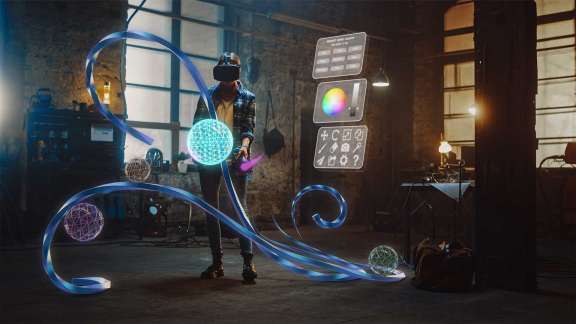FPGAs in Consumer Electronics
Discover how FPGAs enhance device functionality, improve processing speeds, and enable customizable features, making them a key technology in the evolution of modern consumer electronics.
Enhancing Performance and Flexibility in Consumer Electronics
Field-Programmable Gate Arrays (FPGAs) are playing a transformative role in consumer electronics by offering unmatched performance and flexibility. These versatile components enable devices like digital cameras, video game displays and consoles, and home entertainment systems to handle complex tasks with greater efficiency. FPGAs allow for real-time processing improvements, customization of hardware features, and acceleration of data-intensive functions, ensuring that modern electronics can meet evolving demands and deliver enhanced user experiences. By integrating FPGAs, manufacturers can push the boundaries of what consumer devices can achieve.
Benefits of FPGA in Consumer Electronics
High-Performance Processing
FPGAs are capable of handling parallel processing tasks with high speed and efficiency. This makes them ideal for applications requiring real-time processing, such as video and image processing, where they can significantly enhance performance and reduce latency.
Flexibility and Customization
FPGAs can be reconfigured to perform a wide range of tasks, allowing manufacturers to tailor hardware specifically to the needs of a device. This flexibility supports custom features and optimizations that can be updated or modified as technology evolves.
Faster Time-to-Market
By leveraging FPGAs, developers can prototype and test new features quickly without needing to design custom silicon from scratch. This accelerates the development process and enables faster time-to-market for new consumer electronics products.
Enhanced Connectivity
FPGAs enable advanced and customizable connectivity options by supporting various communication protocols and interfaces. This flexibility allows devices to integrate multiple networking standards efficiently, ensuring high-speed, reliable, and adaptable connectivity for evolving consumer electronics.
Consumer Electronics AI at the Edge
AI is revolutionizing consumer electronics, enabling powerful capabilities such as object detection, real-time edge processing, and advanced camera enhancement. Field Programmable Gate Arrays (FPGAs) are uniquely suited to accelerate these AI functions directly on devices, delivering high performance, flexibility, and energy efficiency. By leveraging FPGAs, consumer electronics can offer faster, more responsive AI-powered features that enhance the overall user experience.
Object Detection
FPGAs enable video-based electronic devices such as smart cameras and drones to recognize and track objects in real time, which is essential for applications like facial recognition, obstacle avoidance, and interactive AR/VR experiences. FPGAs’ parallel processing capabilities ensure real-time, accurate detection without the latency typical of cloud-based solutions.
Real-Time Processing at the Edge
FPGAs facilitate on-device AI processing at deterministic low latency, preserving user privacy by minimizing data transfers to the cloud. This localized processing also conserves bandwidth and enhances device performance, especially in battery-operated, always-on electronics.
Consumer and Prosumer Camera Enhancement
FPGAs accelerate AI algorithms for real-time image and video quality enhancements. By enabling these enhancements, FPGAs allow users to capture high-quality photos and videos instantly, making them invaluable for smartphones, digital cameras, and home security systems where visual clarity is essential. They also enable users to create high-quality video content for streaming and other consumer/prosumer media applications.
Applications
Next Gen TV/Video Displays and Peripherals
FPGAs are ideal for enabling the latest TV and Video Displays with enhanced LED lighting features and abundant video connectivity protocols. FPGAs enable real-time processing of high-resolution video signals, allowing for superior image quality and smoother playback by handling tasks like scaling, de-interlacing, and color correction. FPGAs also support high-bandwidth data transfer and processing, which is essential for 4K and 8K resolutions. Additionally, their flexibility allows for the integration of new video standards and formats, as well as the customization of display features and connectivity options. This adaptability ensures that TV and video peripherals can keep up with evolving technology and user demands.
AR/VR
FPGAs enhance performance and functionality by providing high-speed, real-time data processing and customization. They handle complex tasks such as rendering detailed graphics and managing sensor data with low latency, which is crucial for creating smooth, immersive experiences. FPGAs enable the parallel processing of multiple data streams, allowing for accurate depth sensing and motion tracking. Additionally, their flexibility allows for the optimization of hardware to meet specific application needs, supporting high-bandwidth data transfer and integration with various sensors and display technologies. This adaptability ensures that AR and VR systems can deliver high-quality, responsive, and immersive user experiences.
Consumer Drones
FPGAs play a pivotal role in enhancing performance and functionality. They handle real-time processing tasks such as stabilizing video feeds, managing flight control algorithms, and integrating sensor data, which is essential for smooth and stable flight. FPGAs enable high-speed data processing and low-latency responses, improving navigation, object detection, and collision avoidance systems. Their ability to be customized allows for the implementation of advanced features like autonomous flight modes and sophisticated image processing. Additionally, FPGAs support efficient handling of high-resolution video streams and complex sensor inputs, contributing to better overall performance and enhanced user experiences in consumer drones.
Video and Casino Gaming Machines and Peripherals
FPGAs boost performance by handling high-speed graphics rendering and real-time processing with low latency. They enable smooth gameplay through efficient management of complex algorithms and fast data handling, support advanced features like real-time effects and high-resolution displays, and facilitate customizable hardware for various gaming applications. Additionally, FPGAs improve the responsiveness of gaming peripherals and ensure reliable operation by integrating and processing multiple data streams effectively. Additionally, FPGAs are ideal for video game emulation and controllers, enabling classic video games on new hardware formats
“Smart” Consumer Products and Wearables
FPGAs enhance functionality by providing real-time processing for data from various sensors, such as accelerometers and heart rate monitors. They enable efficient handling of complex algorithms for health tracking, gesture recognition, and activity monitoring, while also supporting low-latency responses for a seamless user experience. Their flexibility allows for customization to meet specific wearable needs and adapt to new features, optimizing power consumption and performance while integrating with wireless communication technologies.
Consumer and Prosumer Cameras and Projectors
FPGAs play a crucial role by accelerating image and video processing tasks. They handle real-time functions such as image stabilization, noise reduction, and high-resolution scaling with low latency, ensuring high-quality visuals. FPGAs enable customization for advanced features like HDR (High Dynamic Range) processing and 4K/8K video output. They also facilitate seamless integration of various interfaces and protocols, enhancing connectivity and overall device performance. This flexibility and processing power lead to improved image quality and a richer user experience in both cameras and projectors.
Browse Products to Get Started
FPGA Devices
For Next Generation LED TVs/Displays, Peripherals, and Prototyping
For Video-Based Consumer Products (Consumer and Prosumer Cameras, Projectors, AR/VR, Drones)
For “Smart” Consumer Products and Casino Gaming
Intellectual Property (IP)
Video and Vision Processing Suite
Image Signal Processor IP Solution – Design Example
Tone Mapping Operator (TMO) Intel® FPGA IP
Video Connectivity IP





